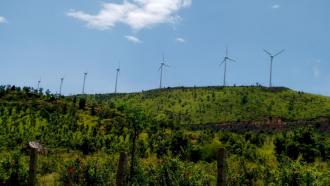
Science in India is in interesting times. We have some of the best scientists producing world-class research working in a host of institutions within India that are largely public funded. A large scientific workforce complimented by a promising younger generation – that is often dubbed to be our demographic dividend. A learned and competent scientific administration fighting tooth and nail for increased budgetary allocations to invest in science.
Yet, statements by responsible citizens holding public offices against the established theories of science only points out that as scientists and science communicators we have failed to communicate effectively about science to the public at large. Mere rhetorical responses, articles and online campaigns may not go too far in countering these. In other words, such events only suggest that we may have a lot to do with respect to communicating science and reinforcing our resolve to take this on more aggressively and objectively. There is no denial that science journalism is key that can take on issues concerning science, but given the state of things, science communication takes precedence.
Where do we begin?
Beyond the science curriculum that currently lays emphasis on established concepts and methods, it is critical to spread the word about the new and exciting research that gets done in the country. According to Clarivate Analytics, India ranks fourth on the quantum of the research output, behind USA, China and Japan. As per the R & D Statistics document released by DST recently, it quotes Scopus database and states that the research output in 2013 had crossed 100,000 publications a year. Some of the leading institutions like IISc alone produces 2000 publications, all IITs are estimated to produce around 10,000 to 12,000 publications, the entire CSIR organisation (with about 38 labs) produce about 6,000 publications.
However, the coverage on research carried out in the mainstream media (print and electronic) is woefully inadequate. Some estimates puts it between 6 to 8% in the print media. The most common accusation is that scientists are not communication friendly. While that is partly true; it is also because how the mainstream media would like to sensationalise or as they call it, ‘bring out the news’ in the research finding with either an overarching title or misstating the facts. Either ways, it is the science and public appreciation of science that suffers.
It is here that a nuanced and structured approach to science communication takes the stage. So, would you write about every research publication that is published? While that is desirable, our experience at IISc, by way of establishing and running the Science Media Center at IISc, suggests that only 10% of the published work makes the cut. In all, only about 150-200 journal articles of about 2000 publications, are converted into popular articles. These could be either published in high-impact journals, socially relevant or at least where the research output could be articulated to connect with the audience and public at large.
Beyond writing a popular summary or translating the research output into a news story, a key process that we have also established for research based publications is ‘dual vetting’; first by the concerned researcher and then by the respective institution whom we are formally working with. This is to ensure that while we retain the style of writing (for popular audience), the story is factually correct and does not allow any concepts to be misconstrued. The latter part of institutional vetting was conceived by Prof. Balaram, former Director at IISc, who was instrumental in the establishment of Science Media Center at IISc.
But doing this for all the publications produced by many other leading institutions, who also publish in high impact journals and carry out socially relevant research, would not be possible by one entity or a few. The recent history of science communication in India traces its origins to PTI, where a Science desk headed by KS Jayaraman prevailed. But it couldn’t stand the test of times and there is no more a dedicated desk but is now part of Lifestyle, Science and Technology. Many of them who worked at PTI, including KS Jayaraman, moved on but still write on scientific outputs.
Very few mainstream media houses can boast of a team of science journalists and/or having a science editor -- notably: The Telegraph, The Hindu, The Wire, NDTV, Deccan Herald, Hindustan Times and The Hindu Business Line. Most other newspapers mostly source science / research based news from content syndicated by New York Times, Guardian Science, AFP and the like, that mostly talks about research carried out abroad. Of course, many of them are exciting and not to demean the wonderful work carried out elsewhere, but an equal or perhaps greater emphasis could be given to equally competent and perhaps relevant research carried out by scientists in India. The only exception to this has been India Science Wire, promoted by Vigyan Prasar, an autonomous institution under the Department of Science and Technology. The latest entrant here is Mongabay - India, that focuses on wildlife, environment and conservation.
Beyond news stories
Some breath of fresh air has been the wonderful initiative by two freelance science writers Aashima Dogra and Nandita Jayaraj, called the Life of Science, which focuses on women scientists in India. What started as blog posts have now become regular features and often syndicated by The Wire. Blogs help! Beyond what science communicators or journalists do, it would be really helpful if scientists take up writing blog posts themselves and even give popular talks. Some scientists do have a natural flair when they give a talk, but it would really help if more step out of labs and give popular talks. IndiaBioscience based out of the National Centre of Biological Sciences (NCBS) is another notable place for interesting news stories, interviews and information in life sciences.
There are also other forms of communication, beyond written texts as news stories or blog posts -- we have scitoons, infographics, podcasts, television series, events/talks and shows/exhibitions. Science fiction can also take this up to a different level. Prof. CV Vishweshwara was known for his cartoons. JC Bose is considered as the father of Bengali science fiction. FactorDaily carries a weekly column on this every Saturday called New Worlds Weekly. The Science Monitor aired by Rajya Sabha TV (RSTV) on weekends is perhaps one of the only dedicated science programme featuring research from Indian labs, also produced by Vigyan Prasar.
Social media is another platform that offers immense potential to enhance science communication. The younger generation in particular is mostly on social media platforms, than accessing information via newspapers. The platforms of Twitter, Facebook, WhatsApp and the like offers much promise here.
And then we have a few events that promote science. Bengaluru has patronised a culture of science, and so it has multiple events; be it the talks organised by Bangalore Science Forum or the regular shows at Jawaharlal Nehru Planetarium or the recent popular talk series by ICTS, called Kaapi with Kuriosity. The Visweswaraiah Industrial and Technological Museum has been active for a while too and there is much promise from the upcoming Science Gallery in Bengaluru. The Chai and Why series at TIFR in Mumbai has been incredible too. The Science City in Ahmedabad that also hosted the Nobel Exhibition last year is an exciting place indeed. But all these are a few and we require many more of these across the country. Not just in a few state capitals, but perhaps in every district headquarters.
The Science Centres conceived and perhaps operational at many places either lack access to resources or trained/qualified personnel to lead it, and if both are available financial constraints often put them off. The India International Science Festival is another annual event that has been taking place for the last 3 years, attracting large number of public, and attempting to showcase the ongoing research by the public-funded institutions under the Ministry of Science & Technology and Earth Sciences. It moves on to different cities and draws huge gathering from that region. Some of the public funded institutions / national laboratories do now observe an ‘Open Day’ by inviting and allowing the public, including students, to visit their labs, but only for one-day in a year.
Last year, the Department of Biotechnology also started the Nobel Prize Series - India along with the Nobel Media AB. The first edition was held in Ahmedabad last year and this year it is slated to be held next month, during February 1-5, in Panaji, Mumbai and New Delhi.
The notable exception has been the outreach efforts at IUCAA, Pune. Arvind Gupta through his Toys from Trash has been pioneering with thousands of videos explaining the science and using low-cost materials. Many of these are now being linked up to the prevailing curriculum to teach science in schools. Thankfully, many of these are also translated into regional languages.
What next?
A key challenge that plagues science communication in India is that it is largely in English, as the language of communication. A country as diverse as India with 22 official languages (including English), the task ahead of us in reaching out is enormous indeed. We have very limited efforts that are on-going when it comes to outreach in regional languages. This has been echoed recently by Prof. K. VijayRaghavan in an op-ed and later even by the Hon’ble Prime Minister, Narendra Modi during an address recently. Needless to say, only if all these efforts when pursued in regional languages across the country, can yield the intended goal of raising the bar of scientific literacy across the country.
Clearly, there is no silver bullet here to take on the challenges, but a start somewhere is crucial and more so a concerted effort to amplify everything that is going on to increase the outreach efforts is the need of the hour. It would also call for a collective effort to present the different forms of communication in regional languages. Ultimately, it is crucial that every citizen who is benefited by the fruits of science, is made aware that the pursuits of science and research is towards enhancing the quality of life and leading to development, while also pushing the frontiers of knowledge known to humankind.






